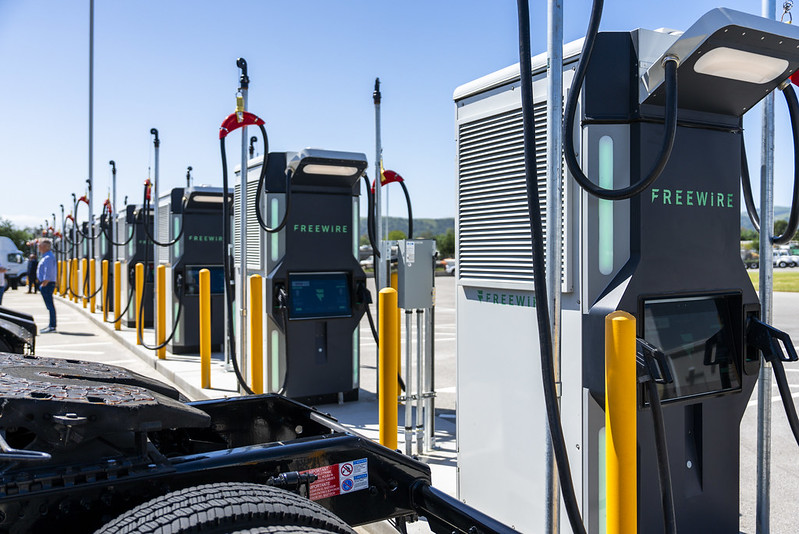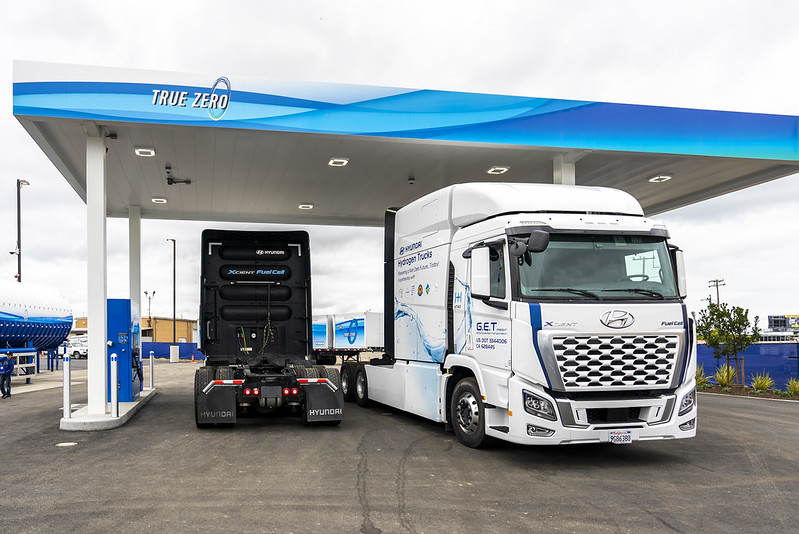For Immediate Release: May 8, 2024
What You Need to Know:
Charging and refueling stations for zero-emission cars, trucks and buses are rapidly coming online throughout California.
SACRAMENTO — Ahead of National Infrastructure Week, the California Energy Commission (CEC) is highlighting work happening across the state to build a bigger, better network of charging and refueling infrastructure for zero-emission cars, trucks and buses.
As California nears two million zero-emission vehicles (ZEVs) sold, billions are being invested to meet projected infrastructure needs. Last year, Governor Gavin Newsom also signed a bill extending the CEC’s Clean Transportation Program, providing a dedicated source of funding for zero-emission charging and refueling through 2035.
At its April Business Meeting, the CEC approved $771 million to support implementation of the Clean Transportation Program. The bulk of the dollars will go to support incentives for zero-emission truck and bus charging and refueling projects.
California is also expected to receive more than $380 million from President Biden’s Infrastructure Investment and Jobs Act. The funding will help create 6,600 miles of electric vehicle (EV) corridors, with at least four fast chargers every 50 miles.
"The fueling network of the future has arrived in California with many transportation companies unveiling new zero-emission truck and bus depots and thousands of EV chargers coming online this year,” said Commissioner Patty Monahan. “It's thrilling to see the impact and excitement the state’s investments are bringing to communities statewide.”
Projects are coming online across the state. Examples include:
- First fast charger opens in Calexico as part of a network of more than 10,000 statewide
- Nation’s first solar-powered EV truck stop opens in Bakerfield
- World’s largest amazon EV truck fleet hit Los Angeles roads
- State-of-the-art electric truck charging stations in Compton
- World’s first commercial hydrogen truck stop opens in Oakland
- 15 electric truck chargers online in Gilroy
- Electric trucks and charging depot unveiled in Ontario
- First class 8 heavy-duty electric freight truck makes historic crossing of U.S.-Mexico borders
Visit Building California's Future to explore more.
To improve the charging experience, the CEC recently proposed first ever state-level regulations for EV charger reliability and reporting. Under CEC’s proposal, a performance-based standard would apply to all new publicly funded EV chargers. In addition, the proposed regulations would require sharing of charging station operational data to help drivers make more informed choices about when and where to charge their EVs.
Related Links
- Zero-Emission Vehicle and Charger Statistics Dashboard
- How Electric Vehicles Can Help California’s Grid
- Clean Transportation B-Roll (the provided video footage is available for download and use)
- California Energy Commission Photos on Flickr (available for download and use)
###
About the California Energy Commission
The California Energy Commission is the state's primary energy policy and planning agency. It has seven core responsibilities: advancing state energy policy, encouraging energy efficiency, certifying thermal power plants, investing in energy innovation, developing renewable energy, transforming transportation, and preparing for energy emergencies.
Newsroom
Media Contact
Media and Public Communications Office
MediaOffice@energy.ca.gov
(916) 654-4989


